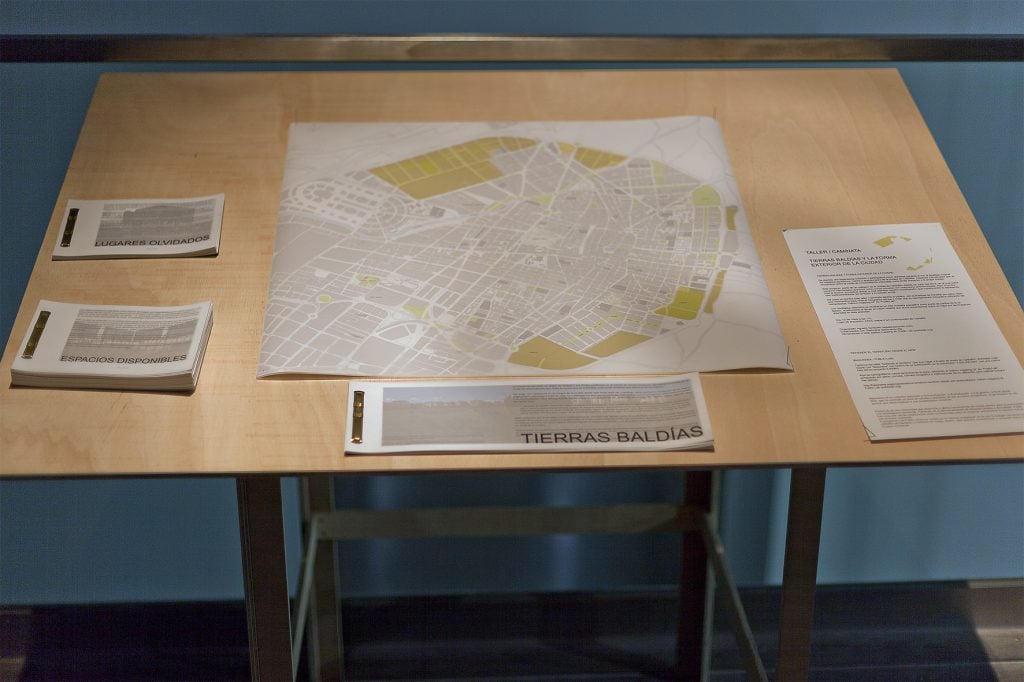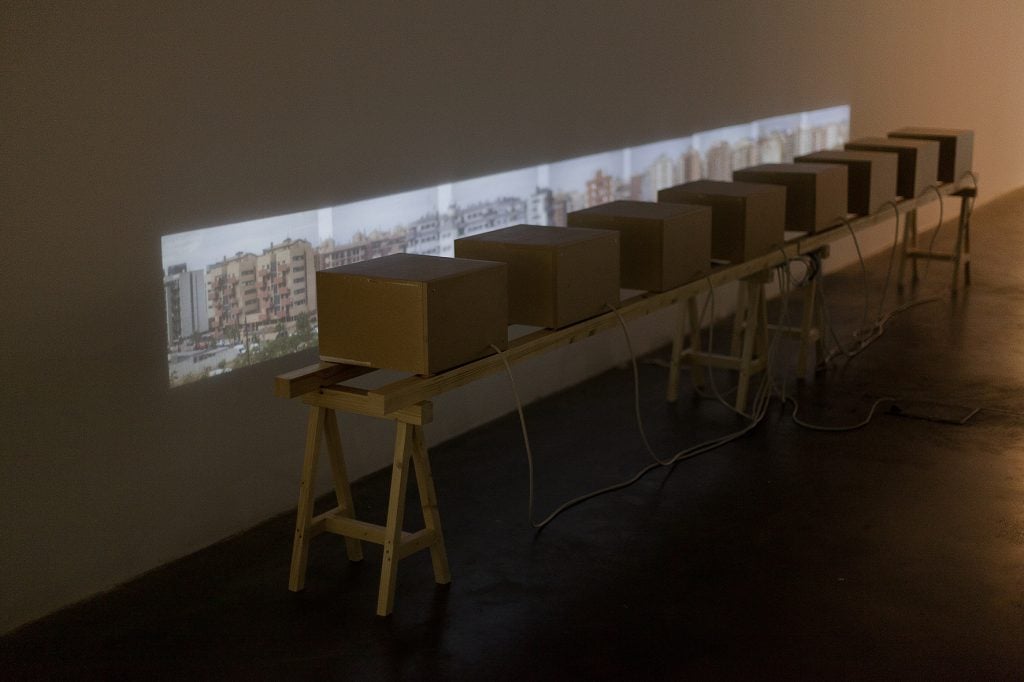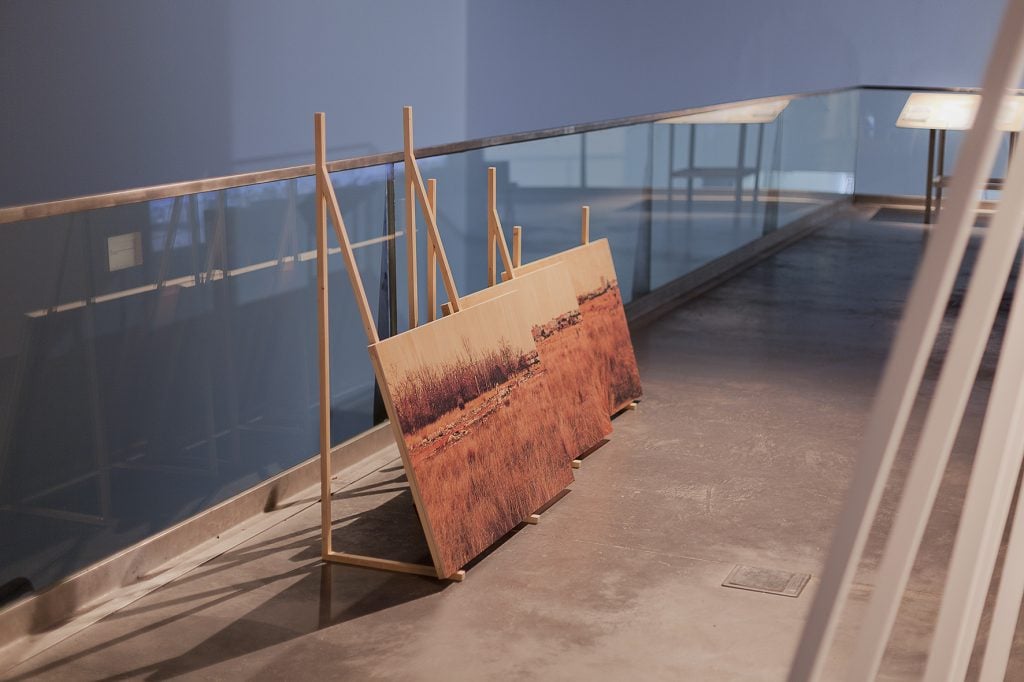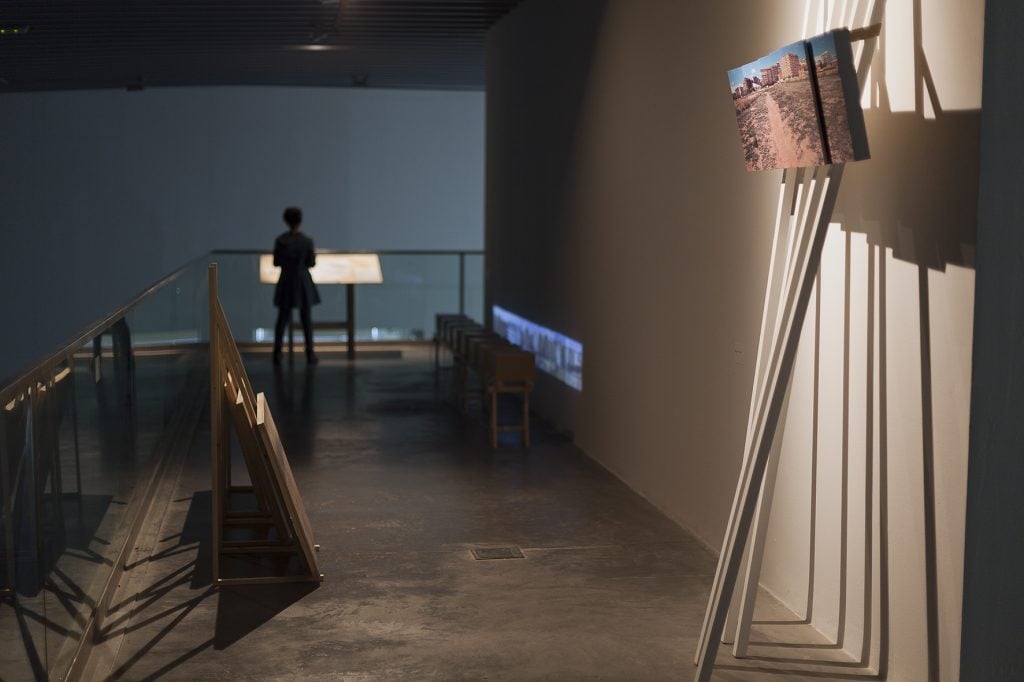Terrain vague (2013-14)
EACC Espai d’Art Contempoàni de Castelló.
Becas Habitat Artístic
Intersticiales (fragmento)
“Cada época inventa sus propias técnicas infames de destrucción”. (Bruce Bégout, Le ParK)
Construir una memoria visual de los espacios en tránsito, un archivo documental sobre el entorno, sobre el paisaje contemporáneo que nos rodea y que estamos acostumbrados a ver pero al que no prestamos suficiente atención. Ese es, a grosso modo, el objetivo que Agustín Serisuelo se ha marcado en este proyecto que fija su mirada analítica en la circunvalación de Castellón, una vía de comunicación que envuelve la ciudad y tiene como objetivo específico mejorar el tráfico y el acceso a la ciudad. No obstante, esta variante produce otro tipo de situaciones, además de las propias de la circulación, que no resultan tan “positivas” y que nos hacen meditar sobre la funcionalidad de la misma y sobre el trazado urbanístico en general.
Esta alternativa viaria puesta en marcha a partir del año 2003 encierra y aprisiona la ciudad como lo que es, un cinturón de asfalto con rotondas a modo de orificios para ensartar la aguja del cierre. Todo ello marca visualmente la frontera entre lo urbanizado/progreso y los terrenos baldíos/pasado. Así, observamos una serie de planicies que hasta no hace mucho verdeaban con naranjos que progresivamente fueron abandonados y relegados al olvido.
Irene Gras Cruz
“Each age invents its own nefarious techniques of destruction.”
(Bruce Bégout, Le ParK)
Build a visual memory of spaces in transit, a documentary archive on the environment, on the contemporary landscape that surrounds us and that we are used to seeing but to which we do not pay enough attention. That is, roughly speaking, the objective that Agustín Serisuelo has set for himself in this project that fixes his analytical gaze on the Castellón ring road, a communication route that surrounds the city and has the specific objective of improving traffic and access to the town. However, this variant produces other types of situations, in addition to those typical of circulation, which are not so “positive” and which make us meditate on its functionality and on the urban layout in general.
This road alternative set up in 2003 encloses and imprisons the city as what it is, an asphalt belt with roundabouts as holes to thread the closure needle. All of this visually marks the border between the urbanized/progress and the wasteland/past. Thus, we observe a series of plains that until not long ago were green with orange trees that were progressively abandoned and relegated to oblivion.





